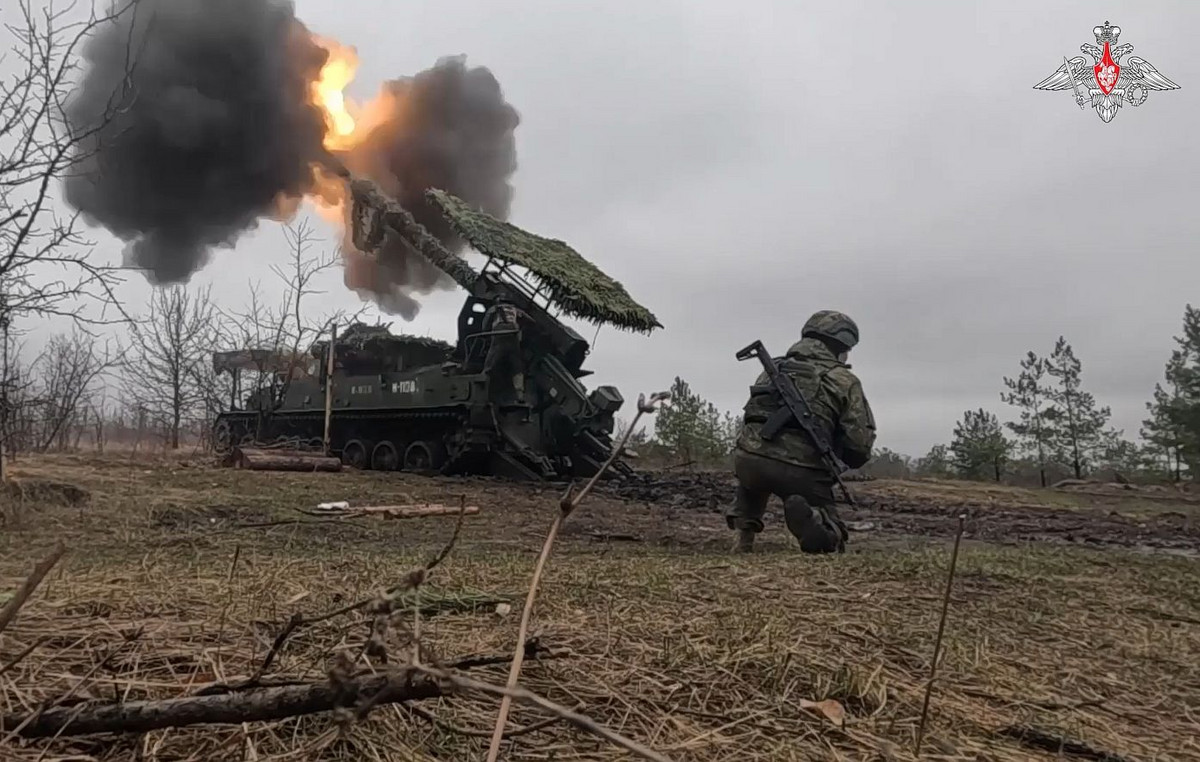Hours after the Al Haj bakery distributed the last piece of bread on Thursday (22), Jihad Al Shafie was still waiting, as the hope of bringing some food to her family had already disappeared.
Like many in the crowd outside the bakery in downtown Gaza, Al Shafie arrived in line in the morning, anticipating the newly breaded bread of the first flour deliveries to enter the territory since early March.
He was forced from empty hands, as many of the food shipments that were expected to arrive remained in southern Gaza, about 20 kilometers away.
“We see people waiting for bread, but no one receives it,” Al Shafie told CNN . “It is vital that those responsible understand our suffering and act to contain it,” he added.
For an hour on Thursday afternoon (22), the bakery “suffered unprecedented invasions,” according to the owner, while a crowd entered the facilities in search of food. Through the small window that separated the workers from the crowd, desperate hands entered, trying to get a bag of bread.
Chaos disappeared as quickly as bread, leaving dozens of people with nothing.
Few humanitarian aid trucks in Gaza
Ina’am al Burdeini walked an hour from Al-Maghazi’s refugee camp to the bakery, just to find a crowd when he arrived. She also came out empty hands.
“It’s exhaustive and we feel lost and abandoned,” said Al Burdeini, driving anger both inside and out of Gaza. “People are desperate. It’s time to act, don’t make empty promises. Hamas, skirt!”
This week, Israel began to allow the first trucks with food and humanitarian supplies since imposed a total blockade of supplies on Gaza on March 2.
More than 300 aid trucks have entered the territory since Monday (19), according to the coordinator of government activities in the territories of Israel (Cogat), which supervises deliveries.
This is just a fraction of the help received before the war, when 500 to 600 trucks a day came to Gaza, according to the United Nations.
On Thursday (22), Cogat stated that “there is no food shortage in Gaza,” although Israeli Prime Minister’s office, Benjamin Netanyahu, said this week that Israel would release “a basic amount of food” in Gaza “to avoid a humanitarian crisis.”
Needle in the haystack
“The help that arrives now is a needle in a haystack,” said Philippe Lazzarini, head of the United Nations Assistance and Works Agency for Palestine Refugees (Unrwa), on social networks. “A significant and uninterrupted flow of help is the only way to prevent the current disaster from getting worse.”
And not all help comes to the Palestinian population, and some part is retained due to dangerous or looted routes on the way to distribution points. None of the trucks arrived north of Gaza, where Israel recently issued several evacuation warnings.
On Thursday night (22), 30 humanitarian aid trucks in the south and downtown Gaza were attacked and vandalized, according to Nahid Shuheiber, head of the Territory Transport Association.
In Deir al-Balah, armed gangs opened fire on the trucks and looted them, said Shuheiber. When local security teams, supported by Hamas, arrived to protect the train, the Hamas Government Social Communication Office said several Israeli attacks hit the scene, killing six people.
THE CNN He contacted Israel’s defense forces (IDF) to comment.
Insecurity in the face of increased hunger
The World Food Program (PAM) said 15 of its trucks were looted in southern Gaza while heading to bakeries supported by the UN organization.
“Hunger, desperation and anxiety about the arrival of more food help are contributing to increased insecurity,” PAM said in a statement on Friday (23).
“We need the support of Israeli authorities to bring much larger food assistance to Gaza faster, more consistently and transported by safer routes, as was done during ceasefire,” the statement said.
The Palestinian NGO network condemned the withdrawal of humanitarian aid trucks. “The trucks, loaded with flour and to supply bakeries in the city of Gaza and in the northern provinces, have been looted, depriving children and families who already suffer from severe hunger for their basic food needs.”
A joint aid program that unites US and Israel, called Gaza Humanitarian Foundation, is expected to start operating four distribution sites before the end of the month. But the UN and other humanitarian organizations refused to work with the group.
The new plan was criticized by high humanitarian responsible, who warned that it is insufficient, and can endanger civilians and even encourage their forced displacement.
UN Chief Help, Tom Fletcher, said last week that he should not waste time on an alternative Gaza help, writing in X: “For those who propose an alternative mode of help distribution, we don’t waste time: we already have a plan.”
Still this Friday (23), the Association of Bakery Owners in Gaza announced that bakeries would refuse to function “in the light of the difficult circumstances that the Gaza Strip faces”, appealing to PAM to distribute flour to families first.
The Association’s president, Abdel Nasser Al-Ajrami, called on international organizations to “intervene urgently” with Israel to allow “flour, sugar, yeast, salt and diesel” to be entry for bread to be available to everyone.
This content was originally published hungry in Gaza: Limits on Humanitarian Aid affects territory population on the CNN Brazil website.
Source: CNN Brasil
Bruce Belcher is a seasoned author with over 5 years of experience in world news. He writes for online news websites and provides in-depth analysis on the world stock market. Bruce is known for his insightful perspectives and commitment to keeping the public informed.





